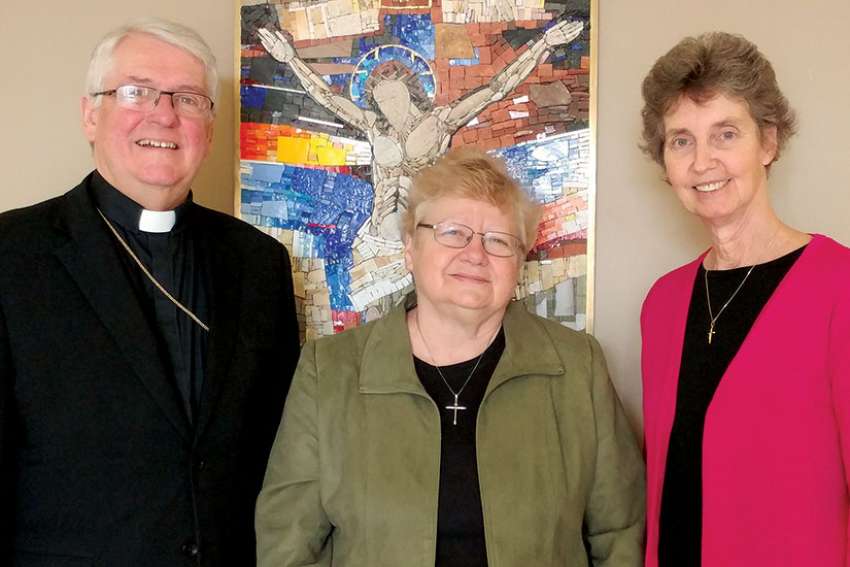Starting March 17, NAVFD is sending out questionnaires to all major superiors and provincial superiors of religious congregations operating in Canada. Information gathered from this survey will lay the foundations of a research study on the state of religious vocations in the Canadian Church.
“We hope to have a comprehensive look at where are people coming to religious life today from across Canada,” said NAVFD executive director Sr. Nancy Sullivan.
“Not just where they’re coming from, but who they are, what attracted them, how did they find out about their congregation. You know, just all kinds because there has never been anything like this that’s been Canada-wide with this level of research.”
Sullivan and NAVFD president Sr. Mary Rowell, both from the Congregation of the Sisters of St. Joseph in Canada, have been talking about a research study like this for almost three years.
Vocations in religious life have been a lightning rod for discussion within the Church worldwide. In an interview published March 8, Pope Francis said the lack of priests is a “serious problem” that the Church must solve.
In Canada, the number of vocations to religious life (priests, brothers and sisters) has been on a steady decline. The total has dropped from 22,471 in 2004 to 13,890 in 2015, according to the Canadian Religious Conference (CRC), which monitors about 200 congregations.
The idea for a Canadian study came from a similar study conducted in the United States by the Center for Applied Research in the Apostolate (CARA) for the National Religious Vocation Conference (NRVC) in August 2009.
“We work very closely with (NVRC),” said Rowell. “(The study) really has enhanced their abilities to reach right across the United States and to assist their members in vocation ministry. In a multitude of ways, it’s enabled them to develop materials, training programs, education (and) conferences to address these very things.”
The 2009 study, titled “Recent Vocations to Religious Life,” found that although religious are an aging population (75 per cent of men and 91 per cent of women are 60 and over), there are a few congregations experiencing significant growth.
The study surveyed new religious members and found that nine in 10 were raised Catholic and 73 per cent attended a Catholic school for part of their education.
Men were more likely than women to report they first encountered their religious institute in a school or another institution where the members served, while women were more likely than men to learn about their institution through a friend or advisor.
With the recommendation of its American counterpart, NAVFD is working in partnership with CARA to run a similar survey on Canadian religious congregations.
Rowell anticipates that many of the results will likely reflect the results that their American counterparts have been seeing over the years. Still, it is important to create a database that also speaks to the unique diversity found in Canadian religious institutions.
“From what I hear informally of new members here in Canada, I would say that we will have a lot of similarities with the United States,” said Rowell. “But it’s important that we’re able to base it on our own research so that our strategic plan is very much geared to Canada.”
NAVFD’s national conference, which happens every two years, is a unique opportunity for directors to share knowledge and best practices with each other.
Rowell said that NAVFD and CRC have collected demographics and other numerical information from its members for many years.
However, not all religious congregations are members of NAVFD and CRC. Rowell said the information is limited and it doesn’t give vocation directors and formation directors “a full picture.”
“I think (the study) is going to be very helpful, not only for the vocation directors, but for religious communities generally,” said Hamilton Bishop Douglas Crosby, president of the Canadian Conference of Catholic Bishops. “I hope it will be a beneficial study for the Church in Canada.”
The research study is made possible through a $90,000 research grant from Conrad N. Hilton Foundation, a family foundation committed to supporting projects for Catholic Sisters, Catholic education, homelessness and many other initiatives.


